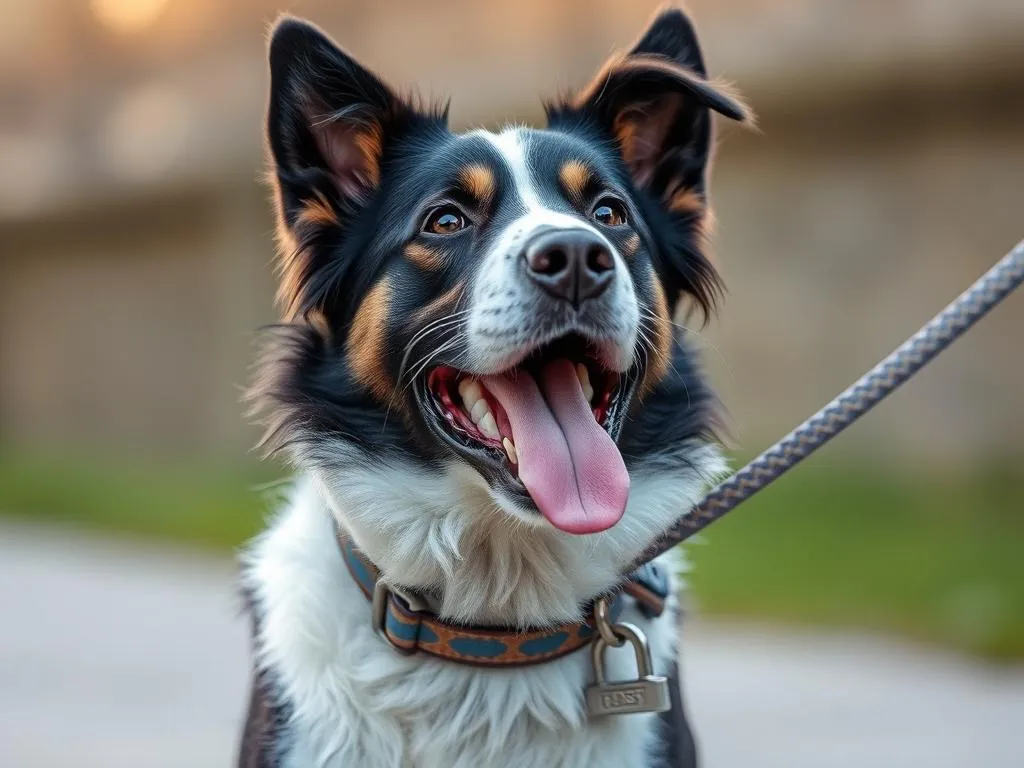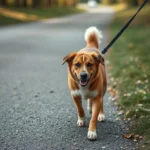
Introduction
When it comes to dog training, one of the more challenging behaviors to manage is leash reactivity. This term refers to a dog’s tendency to react negatively to stimuli while on a leash, often leading to pulling, barking, or lunging. Understanding and addressing leash reactivity is crucial for both the dog’s and owner’s well-being.
Definition of Leash Reactivity
Leash reactivity can manifest in various ways, including barking, growling, lunging, or even freezing in place when encountering other dogs, people, or objects. Common signs of this behavior include stiffening in the body, excessive barking, and a strong pull on the leash.
Importance of Addressing Leash Reactivity
Leash reactivity can significantly impact a dog’s overall well-being and socialization. Dogs that are reactive may miss out on positive experiences, leading to heightened anxiety and stress. For owners, managing a reactive dog can be a source of constant stress, making walks less enjoyable. By addressing leash reactivity, both the dog and owner can experience improved quality of life, stress reduction, and more enjoyable walks.
Overview of the Article
This article will delve deep into understanding leash reactivity, assessing your dog’s behavior, preparing for training, and implementing effective training techniques. We will also provide a step-by-step training plan, advanced techniques, and solutions for common challenges.
Understanding Leash Reactivity
Causes of Leash Reactivity
Leash reactivity can stem from various underlying causes. Understanding these factors can help in addressing the behavior effectively:
- Fear and Anxiety Triggers: Many reactive dogs are driven by fear. They may feel threatened by other dogs, people, or unfamiliar environments.
- Lack of Socialization: Insufficient exposure to different people, dogs, and environments during critical developmental stages can lead to reactivity.
- Previous Negative Experiences: A dog that has had a bad experience while on a leash, such as being attacked or startled, may react out of fear or anxiety in similar situations in the future.
Types of Leash Reactivity
Leash reactivity can present in different forms, depending on the triggers:
- Reactivity Towards Other Dogs: This is one of the most common forms, where a dog reacts aggressively or fearfully when seeing other dogs.
- Reactivity Towards People: Some dogs may react to strangers or even familiar people when on a leash.
- Reactivity Towards Other Animals or Objects: This includes reactions to bicycles, squirrels, or even loud noises that can provoke a response.
Assessing Your Dog’s Reactivity
Observing Behavior
To effectively address leash reactivity, it is essential to observe your dog’s behavior closely. Key signs to look for include:
- Stiff body posture
- Excessive barking or growling
- Lunging towards triggers
- Tail position and movement
Recording these behaviors can provide valuable insights into your dog’s reactivity and help in tailoring a training plan.
Identifying Triggers
Identifying what specifically causes your dog to react is crucial. This can be accomplished by:
- Keeping a Journal: Document situations that trigger a reaction— note specific dogs, people, or other stimuli.
- Gradual Exposure: Carefully observe your dog’s reactions at various distances from the trigger to determine what level of exposure is manageable.
Preparing for Training
Essential Supplies
Before embarking on the training journey, gather the necessary supplies:
- Harness: A well-fitting harness can provide better control than a collar.
- Leash: A sturdy leash (preferably a 6-foot leash) is ideal for training.
- Treats: High-value treats will help motivate your dog during training.
Using the right tools is vital for ensuring safety and maximizing training effectiveness.
Setting Up a Safe Training Environment
A conducive training environment is crucial for success:
- Choosing the Right Location: Opt for a quiet area with minimal distractions to help your dog focus during training sessions.
- Ensuring Minimal Stressors: Avoid busy parks or crowded streets initially. The goal is to create a safe space where your dog can learn and feel at ease.
Training Techniques for Leash Reactivity
Desensitization and Counter-Conditioning
Desensitization and counter-conditioning are foundational techniques in managing leash reactivity:
- Desensitization: Gradually expose your dog to triggers from a distance where they feel safe. Over time, decrease the distance slowly.
- Counter-Conditioning: Pair the sight of a trigger with something positive, like treats or praise. This helps change the emotional response your dog has toward the trigger.
Positive Reinforcement Strategies
Positive reinforcement is a powerful tool in training:
- Rewards: Use treats, praise, or toys as rewards for calm behavior. This reinforces the idea that good things happen when the dog remains calm.
- Timing: Ensure that rewards are given immediately after the desired behavior to create a clear association.
Leash Skills and Handling Techniques
Developing good leash skills is essential:
- Teaching Loose Leash Walking: Encourage your dog to walk beside you without pulling. Use treats to reward them for staying at your side.
- Redirecting Focus: If your dog begins to react, redirect their attention back to you using treats or toys.
Step-by-Step Training Plan
Creating a Training Schedule
A structured training schedule is vital for progress:
- Frequency and Duration: Aim for short, frequent training sessions (10-15 minutes) several times a week. Consistency is key for success.
- Patience and Commitment: Progress may be slow, but patience is essential. Celebrate small victories along the way.
Sample Training Exercises
Incorporate various exercises into your training plan:
- Basic Commands: Teach commands like sit, stay, and leave it to establish a solid foundation.
- Controlled Exposure Exercises: Gradually introduce your dog to triggers at a comfortable distance, rewarding calm behavior throughout.
Advanced Training Techniques
Engaging with a Professional Trainer
When to seek help from a professional trainer is a key consideration:
- Professional Guidance: A certified trainer can provide personalized strategies tailored to your dog’s specific needs.
- Group Classes vs. One-on-One: While group classes can provide socialization opportunities, one-on-one sessions may be more beneficial for addressing specific reactivity issues.
Using Tools and Technology
Modern tools can aid in tracking progress:
- Progress Apps: Utilize training apps or journals to monitor your dog’s progress and identify effective strategies.
- Training Collars and Head Halters: While some tools can assist in managing leash reactivity, they should be used with caution and under professional guidance.
Common Challenges and Solutions
Addressing Setbacks
Setbacks are a natural part of the training process:
- Handling Regression: If your dog regresses, reassess the training plan and adjust as needed. It’s essential to remain consistent and patient.
- Positive Mindset: Maintain a positive attitude; setbacks can be opportunities for learning.
Dealing with Public Situations
Managing reactivity in public can be particularly challenging:
- Strategies for Crowded Areas: Use distance as a tool. If a trigger approaches, create space and redirect your dog’s focus.
- Safe Socialization Tips: Gradually introduce your dog to new experiences in controlled environments to build confidence.
Conclusion
Recap of Key Points
In summary, understanding and addressing leash reactivity is crucial for the well-being of both dogs and their owners. Recognizing the signs, understanding the causes, and employing effective training techniques can lead to significant improvements.
Encouragement for Dog Owners
Patience and commitment are essential in the journey of training a leash reactive dog. While the process may be challenging, the rewarding outcomes of improved behavior and more enjoyable walks make the effort worthwhile. Remember, every small step counts toward building a better relationship with your furry friend.









